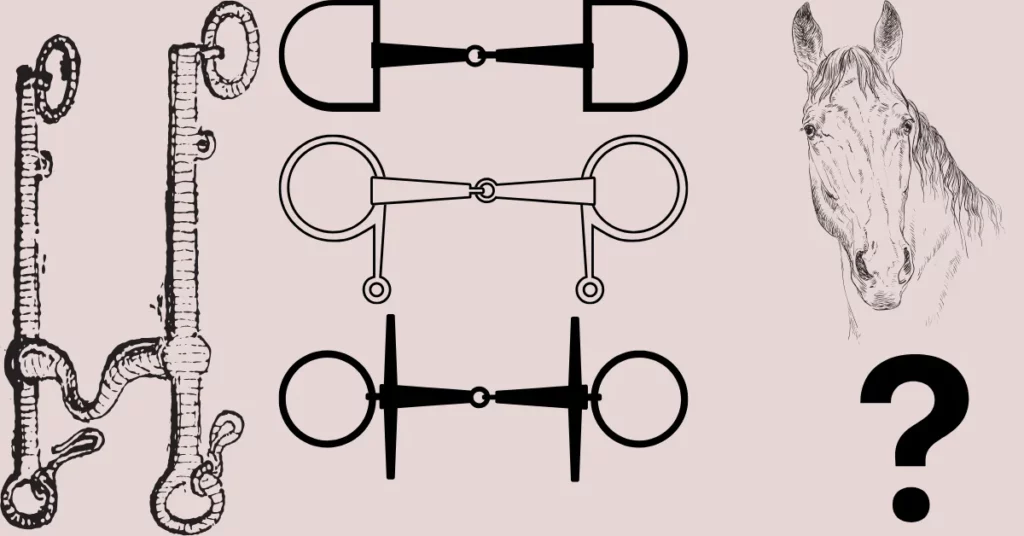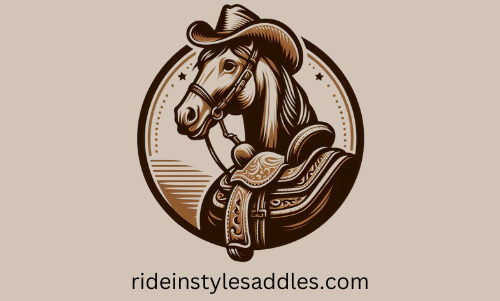
Introduction
In this guide, we’ll delve into various aspects of horse bits, exploring their significance in equestrian activities, how they impact your horse’s performance, and tips for making the best choice for your horse.
Whether you are a seasoned rider or a novice, understanding the intricacies of horse bits can lead to a more harmonious partnership with your horse. Bits not only serve as a tool for communication but also play a vital role in your horse’s comfort and willingness to perform. This guide aims to provide comprehensive insights and practical tips for selecting the most suitable bit for your horse’s unique needs.
Horse bits play a crucial role in communication between horse and rider. With so many types available, choosing the right one can feel quite overwhelming. In this horse bits guide, we break down the different types of bits, their functions, materials, and how to select the best one for your horse’s comfort and performance.
Before diving into the types, it’s essential to understand that the choice of bit can greatly influence your riding experience. Selecting the right bit involves considering your horse’s behavior, training level, and the specific demands of your riding discipline. Below, we will explore the various categories of horse bits in detail, discussing their features and ideal applications.
When considering snaffle bits, it’s important to recognize their versatility. Snaffle bits are designed to create direct pressure on the horse’s mouth, primarily using a single rein. This makes them an excellent choice for novice riders or those training young horses. Their gentle nature encourages a positive response from horses that may be sensitive or new to the bit.
Types of Horse Bits
One popular example of a snaffle bit is the loose ring snaffle. The loose rings allow for more movement, which can help to prevent the horse from leaning on the bit. This type of snaffle provides a softer feel and is ideal for horses that may need a bit of extra encouragement to respond to the reins.
Understanding the different categories of bits is essential for selecting the right one. Here are the main types:
In contrast, the full cheek snaffle provides additional lateral support, making it a great choice for young horses learning to turn and bend. This stability can help prevent the bit from sliding through the horse’s mouth, enhancing communication and control.
1. Snaffle Bits
Moving on to curb bits, these are commonly employed in Western riding and require more skill to manage effectively. The leverage action they provide can create a more significant response from the horse, making them suitable for experienced riders. A Western curb bit, for example, often features a shank and a curb chain, which work together to enhance control during riding.
- Direct pressure on the mouth
- Common for young or sensitive horses
- Best For: Green horses, training, general riding
- Types: Loose Ring, Eggbutt, D-Ring, Full Cheek
2. Curb Bits
- Uses leverage to apply pressure
- Often used in Western and dressage riding
- Best For: Experienced horses, advanced training, dressage, Western riding
- Types: Western Curb, Weymouth (for double bridles)
3. Pelham Bits
- Combines features of both snaffle and curb bits
- Offers more control with two sets of reins
- Best For: Strong horses, jumping, polo, eventing
- Types: Standard Pelham, Jointed Pelham
The Weymouth bit, often seen in double bridles for dressage, combines the snaffle and curb functions, allowing for nuanced communication with the horse. Riders must practice with this bit to ensure they can use the two reins effectively, providing a balanced and clear signal to the horse.
4. Gag Bits
- Increases poll pressure for stronger control
- Common in jumping and polo disciplines
- Best For: Forward-going horses, cross-country, polo, strong horses
- Types: Cheltenham, Elevator
5. Hackamores and Bitless Options
Gag bits, on the other hand, are designed to increase poll pressure, which can be beneficial in certain disciplines such as jumping or polo where more control is required. However, it’s crucial to use gag bits judiciously, as they can be harsh on sensitive horses if used improperly.
- Use nose pressure instead of a traditional bit
- Ideal for horses with mouth sensitivity
- Best For: Sensitive horses, bitless training, hacking
- Types: Mechanical Hackamore, Bosal
Materials and Designs
Next, Pelham bits offer a unique option for those who want the benefits of both snaffle and curb bits. They are particularly popular in jumping and eventing scenarios. Riders can switch between snaffle and curb action simply by adjusting their rein position, giving them versatility in communication.
Different materials influence how a bit feels in a horse’s mouth:
- Stainless Steel – Durable and rust-resistant
- Copper – Encourages salivation and softens the mouth
- Rubber/Plastic – Softer, suitable for sensitive horses
- Sweet Iron – Promotes a moist mouth but can rust over time
Choosing the Right Bit
Selecting the right bit depends on multiple factors:
In addition to traditional bits, bitless options have gained popularity, particularly among riders who prioritize comfort and humane treatment of their horses. Hackamores, for instance, utilize pressure on the horse’s nose rather than the mouth, making them an excellent alternative for horses that may be sensitive or have dental issues. When selecting a bitless option, consider factors like the horse’s training level and the specific disciplines you wish to pursue.
- Horse’s Training Level – Young horses typically need gentler bits
- Mouth Shape and Sensitivity – Some horses prefer thinner or softer bits
- Riding Discipline – Dressage, jumping, and Western riding have different bit preferences
- Rider’s Experience – More complex bits require skilled handling
Common Bit Issues & Solutions
- Resistance or Head Tossing? Try a softer bit or adjust the fit.
- Excessive Drooling? The bit material might not suit your horse.
- Difficulty Turning? Consider a bit with better lateral control.
Recommended Horse Bits
If you’re looking for quality bits, check out these trusted brands:
Understanding the materials used in bits is equally important. The choice of material affects how the bit feels in the horse’s mouth, influencing their comfort and responsiveness. For instance, stainless steel is durable and resistant to rust, while copper bits can encourage salivation, making them more palatable for some horses.
When selecting a bit, consider how the material interacts with your horse’s individual needs, such as their sensitivity and training level. Rubber and plastic bits can offer a softer option for more sensitive horses, while sweet iron bits may promote a moist mouth, but they can rust over time, which may not be ideal for all horses.
- Amazon – Wide variety of snaffle and curb bits
- Pink Equine – Stylish and functional bits for performance horses
Final Thoughts
The right bit can enhance your horse’s comfort and improve communication. Always consider your horse’s individual needs, consult with trainers if needed, and test different bits to find the perfect match.
As you choose the right bit for your horse, take into account their training level and individual preferences. Younger or less experienced horses may benefit from softer bits, while more advanced horses may require increased leverage or control.
In addition to the horse’s training level, consider their mouth shape and sensitivity. Some horses respond better to thinner bits, while others may require a bit that is thicker or made from softer materials. It’s essential to observe how your horse reacts to different bits during training sessions to make an informed decision.
Riding discipline can significantly impact your bit selection as well. For example, dressage riding often requires precise communication, making a snaffle bit an excellent choice, while jumping may necessitate a bit that provides more control, such as a Pelham or gag bit. Understanding the requirements of your chosen discipline will help you select the most appropriate bit for your horse.
As you assess your horse’s needs, it’s also important to consider your own experience as a rider. More complex bits may require advanced skills to handle effectively, so ensure you feel confident in your ability to communicate properly through the reins.
Common bit issues can arise even with the best selections. Resistance or head tossing may indicate that the bit is too harsh or improperly fitted. In such cases, consider switching to a softer bit or adjusting the fit to ensure it rests comfortably in your horse’s mouth.
If excessive drooling occurs, it may suggest that the material of the bit is not suitable for your horse. Experimenting with different materials can help you find the right fit. Additionally, if your horse has difficulty turning, you may need to try a bit that offers better lateral control to improve responsiveness.
As you explore your options for quality bits, consider trusted brands that offer a range of products tailored to different riding styles and preferences. Brands like Herm Sprenger and Myler are known for their innovative designs and high-quality materials, making them reliable choices for riders looking to invest in the best for their horses.
Remember that the right bit is more than just a piece of equipment; it is a bridge to better communication and understanding between you and your horse. Take the time to research and test various options, and consult with experienced trainers or fellow riders to gain insights and recommendations.
In conclusion, finding the perfect bit for your horse may take time and experimentation, but the rewards of improved communication and performance are worth the effort. Continue to educate yourself about equestrian gear and stay updated on new products and techniques to ensure that you provide the best for your horse.
For a deeper dive into equestrian gear, check out our blog posts that focus on both English and Western Riding gear.
Your journey as a rider and horse owner is filled with learning opportunities, and we are here to support you every step of the way.

